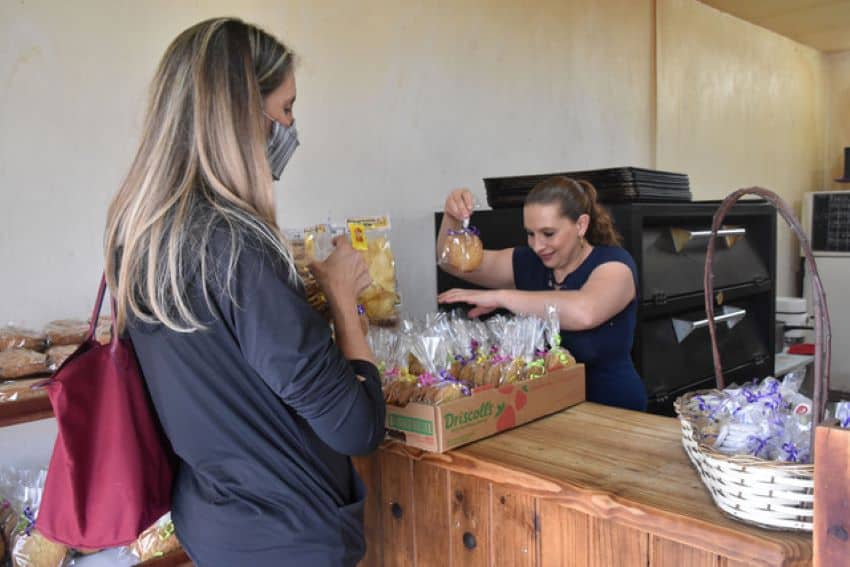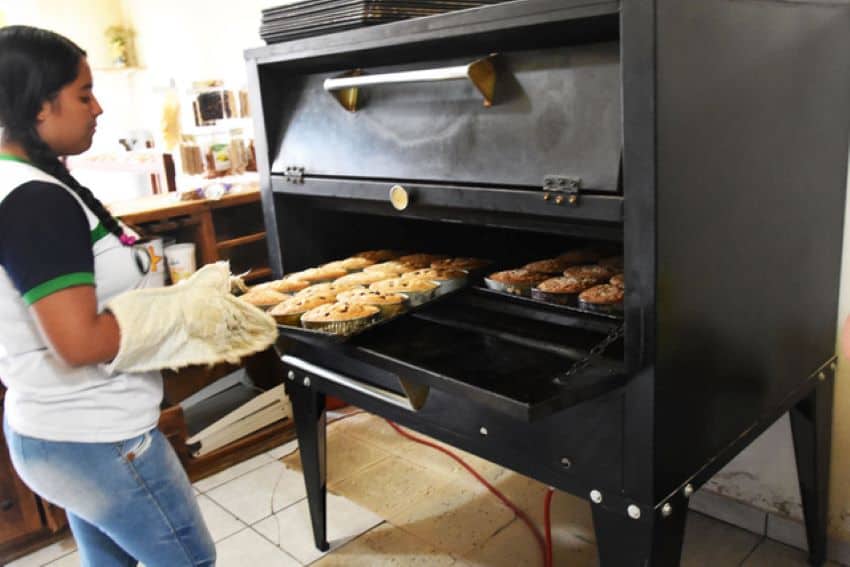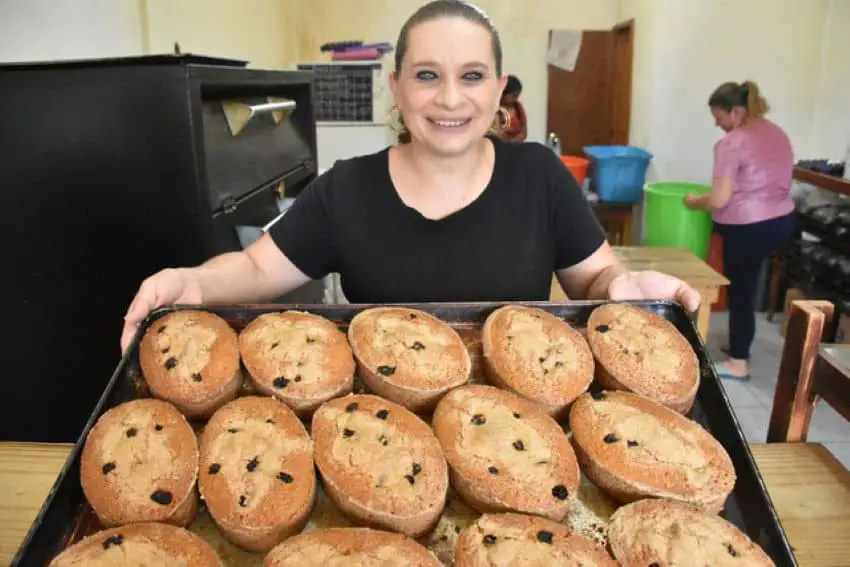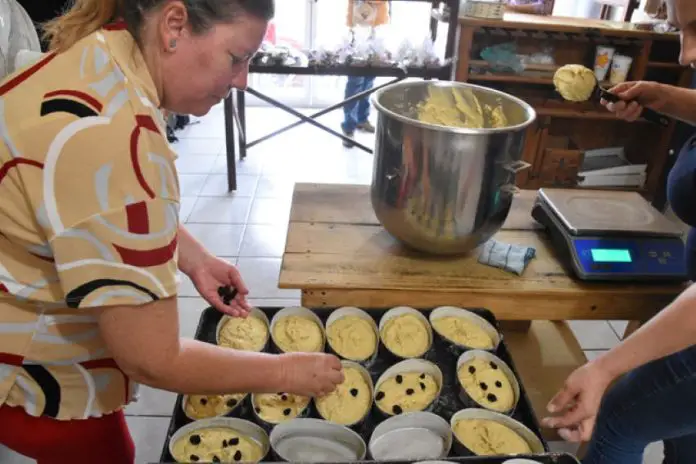Karina Precoma is a bundle of energy, running between the batter she’s mixing, the front sales counter and the oven in her small bakery. She somehow manages to answer questions and talk on the phone the entire time.
Despite the chaos, the bread she’s baking — called pintha here in Chipilo, Puebla — always turns out perfect.
Chipilo is located about 10 miles west of Puebla city and was founded by Italians from the Veneto region of northern Italy in 1882. Although Italians and other Europeans settled in many parts of Mexico in the mid to late 1800s, Chipilo is the only pueblo that has maintained its ancestral customs and traditions, the only one that can truly be called an Italian pueblo. And it’s the only one in all of Mexico where pintha is made.
While some people think that the bread was invented in Chipilo, its origin is a little unclear.
“No one knows for sure because it’s been here for so long,” said Esperanza Sevenello Stefanoni. She and her husband Jacobo Simoni Piloni have a machine that grinds corn into the polenta that’s used in the bread, and she’s considered a local expert on all things chipileño. Their machine’s over 100 years old and, as Sevenello proudly pointed out, has been in use for three generations.

“The legend is: ‘I learned to make the bread from my nonna [grandmother], who learned from her nonna,’” she said. “I am sure they brought the recipe from Italy, but it has changed.”
In fact, there’s a bread enjoyed in Italy called pinza that is somewhat similar to pintha.
“Pinza is Italian,” said Antonio Zaraín García, who has written about the history of Chipilo. “Pintha is Venetian.”
He said that when the first families arrived in Mexico, they were poor and didn’t have all the ingredients needed to make pinza.
“They make a bread in northern Italy that is much larger than what is made in Chipilo,” he said. “It is also sweeter. Here, pintha is considered as a bread of poor people.”
Both pinza and pintha are made with polenta, but pinza is a stuffed bread containing dried fruits and flavored with grappa and fennel. Neither grappa nor fennel is used in pintha, and it’s not stuffed; a few raisins, almonds or chocolate chips are sprinkled on top, along with a dusting of sugar.

And while pinza is traditionally only served at Christmas or on Easter morning, pintha is available all year in Chipilo.
“I learned how to make pintha from my mother-in-law,” Precoma explained. “The recipe was passed down from her and an aunt, handed down through generations. I changed it a little: a little more of this, a little less of that. I use milk. Before, they did not use milk, only water.”
The milk gives the bread a richer flavor, she said.
The bakery has been in business for five years now and is the only bakery in Chipilo that makes the bread.
“There are people who still make it in their homes,” she said, “and every family has their own version of the bread. In most homes, people only use polenta.” Precoma uses a mix of flour and polenta to keep the cost down. Still, she said, “Polenta is the most important ingredient.”
Precoma and her two assistants typically turn out 200 loaves a day. Isabel Minutti keeps an eye on the bread in the ovens while Dominga Zanella sprinkles sugar on the tops of the unbaked loaves that sit in small metal pans.

“When people first arrived here, they were poor,” said Sevenello. “They cooked on firewood and made large loaves that they would then cut.”
Each baked loaf weighs a bit under a pound and sells for 16 pesos (about 80 cents). Pintha tastes a lot like cornbread or a corn muffin. With its sugar topping, it makes a tasty breakfast bread or a great accompaniment to that afternoon cup of coffee.
Zuri Merlo is a regular customer at the bakery and is glad Precoma bakes the bread.
“It is easier now to have [it],” she said. “The measurements are very precise, it takes a long time and there is always a secret to making it.”
But Edith Merlo Stefanoni, her aunt, still prefers to make it at home.
“It has a homemade flavor and is more economical to make,” she said. “And nothing compares to the taste of the original [family] recipe.”

Although Precoma’s pintha can be bought in many stores in Chipilo, it isn’t made, or even available, in nearby pueblos. It can, however, sometimes be found in cities like Puebla or Cholula.
“When it is,” said Sevenello, “it is called pan originál de chipileño” — original bread from Chipilo.
Joseph Sorrentino, a writer and photographer, is a regular contributor to Mexico News Daily. More examples of his photographs and links to other articles may be found at www.sorrentinophotography.com He currently lives in Chipilo, Puebla.
